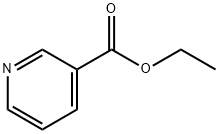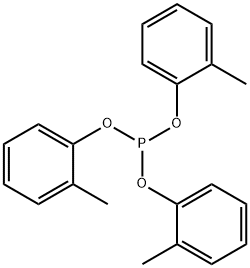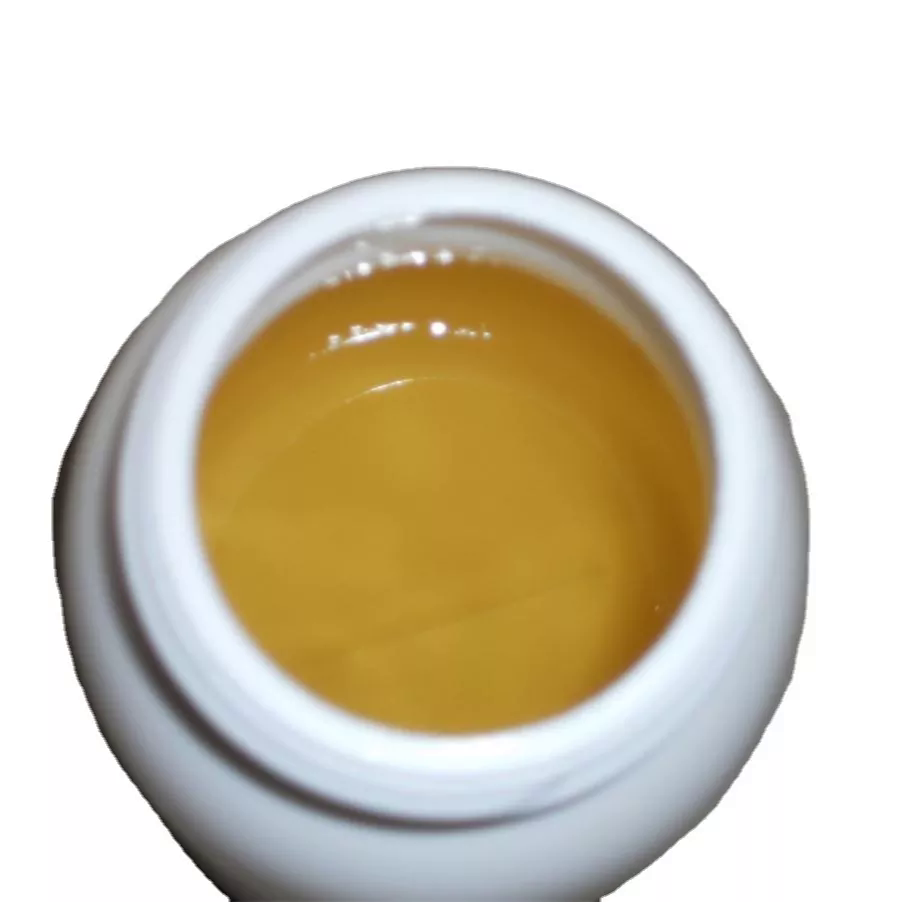Pentyl nitrite
Synonym(s):n-Amyl nitrite, Nitrous acid n-pentyl ester;n-Pentyl nitrite
- CAS NO.:463-04-7
- Empirical Formula: C5H11NO2
- Molecular Weight: 117.15
- MDL number: MFCD00036132
- EINECS: 207-332-7
- SAFETY DATA SHEET (SDS)
- Update Date: 2025-01-27 09:38:02

What is Pentyl nitrite?
Description
Amyl nitrites are flammable, yellowishliquid with a penetrating, fruity odor. Molecularweight= 117.17; Boiling point= 104℃; Specific gravity(H2O:1)= 0.8758 at 20℃; Liquid surface tension= 5 (estimate) 0.020 N/m at 20℃; Liquid water interfacialtension 5 (estimate) 0.040 N/m at 20℃; Relative vapordensity (air= 1) 5 4; Ratio of specific heats of vapor(gas) 5 1.0709; Latent heat of vaporization=4.94 3 105 J/kg; Heat of combustion 5 2 290 3 105 J/kg;Vapor pressure= (estimate) 27 mmHg; 3.48 kPa at 20℃;Flash point= 3℃ (n-); 3℃ (iso-); Autoignitiontemperature= 209°210℃. Hazard Identification (basedon NFPA-704 M Rating System): Health 1, Flammability-,Reactivity 2. Floats on water; very slightly soluble;decomposes.
Chemical properties
Amyl nitrites are flammable, yellowish liquid with a penetrating, fruity odor.
The Uses of Pentyl nitrite
Amyl Nitrite is used in the treatment of erectile dysfunction.
Definition
ChEBI: A nitrite ester having n-pentyl as the alkyl group.
General Description
A clear colorless to yellowish liquid with a fragrant, fruity odor and pungent aromatic taste. Flash point below 73°F. Boiling point 205-210°F (96-99°C). Less dense than water and insoluble in water. Hence floats on water. Vapors are heavier than air. Produces toxic oxides of nitrogen during combustion. Used in medicine and to make other chemicals.
General Description
Amyl nitrite, isopentyl nitrite [(CH3)2CHCH2CH2ONO], isa mixture of isomeric amyl nitrites but is principally isoamylnitrite. It may be prepared from amyl alcohol and HNO2 byseveral procedures. Usually, amyl nitrite is dispensed in ampul form and used by inhalation or orally in alcohol solution.Currently, it is recommended for treating cyanide poisoning;although not the best antidote, it does not require intravenousinjections.
Amyl nitrite is a yellowish liquid with an ethereal odor anda pungent taste. It is volatile and inflammable at room temperature.Amyl nitrite vapor forms an explosive mixture in air oroxygen. Inhalation of the vapor may involve definite explosionhazards if a source of ignition is present, as both roomand body temperatures are within the flammability range ofamyl nitrite mixtures with either air or oxygen. It is nearly insolublein water but is miscible with organic solvents. The nitritealso will decompose in valeric acid and nitric acid.
Air & Water Reactions
Highly flammable. Decomposes on exposure to air, light, or water. Many, but not all, will be colorless flammable toxic gases. Insoluble in water. Reaction with moisture in air or with water produces nitric acid.
Reactivity Profile
Pentyl nitrite is an oxidizing agent. May begin a vigorous reaction that culminates in a detonation if mixed with reducing agents, including hydrides, sulfides and nitrides.
Health Hazard
Inhalation or ingestion causes flushing of the face, pulsatile headache, disturbing tachycardia, cyanosis (methemoglobinemia), weakness, confusion, restlessness, faintness, and collapse. Contact with eyes or skin causes irritation.
Flammability and Explosibility
Flammable
Safety Profile
Moderately toxic by inhalation and ingestion. Causes flushing of skin, rapid pulse, headache, and fall in blood pressure. Mutation data reported. See also NITRITES and ESTERS. Flammable when exposed to heat or flame or by spontaneous chemical reaction. To fight fire, use alcohol foam. An oxidizing material. Vapors explode when heated. It will react with oxidizing or reducing materials. When heated to decomposition it emits toxic fumes of NOx.
Potential Exposure
Amyl nitrite is used to make pharmaceuticals; perfumes, diazonium compounds, and other chemicals.
First aid
If this chemical gets into the eyes, remove anycontact lenses at once and irrigate immediately for at least15 min, occasionally lifting upper and lower lids. Seekmedical attention immediately. If this chemical contactsthe skin, remove contaminated clothing and wash immediately with soap and water. Seek medical attentionimmediately. If this chemical has been inhaled, removefrom exposure, begin rescue breathing (using universal precautions, including resuscitation mask) if breathing hasstopped and CPR if heart action has stopped. Transferpromptly to a medical facility. When this chemical hasbeen swallowed, get medical attention. Give large quantities of water and induce vomiting. Do not make an unconscious person vomit.Note to physician: Treat for methemoglobinemia.Spectrophotometry may be required for precise determination of levels of methemoglobinemia in urine.
Storage
Color Code—Red: Flammability Hazard: Store ina flammable liquid storage area or approved cabinet awayfrom ignition sources and corrosive and reactive materials.Prior to working with this chemical you should be trainedon its proper handling and storage. Before entering confined space where amyl nitrite may be present, check tomake sure that an explosive concentration does not exist.Store in an explosion-proof refrigerator. Protect fromlight. Keep under an inert atmosphere. Metal containersinvolving the transfer of this chemical should be grounded and bonded. Where possible, automatically pump liquidfrom drums or other storage containers to process containers. Drums must be equipped with self-closing valves,pressure vacuum bungs, and flame arresters. Use only nonsparking tools and equipment, especially when openingand closing containers of this chemical. Sources of ignition, such as smoking and open flames, are prohibitedwhere this chemical is used, handled, or stored in a mannerthat could create a potential fire or explosion hazard.
Shipping
UN1993 Flammable liquids, n.o.s., Hazard Class: 3; Labels: 3-Flammable liquid, Technical Name Required.
Incompatibilities
Vapors may form explosive mixture with air. Slowly decomposes in light, heat, and on contact with water. A strong oxidizer. Contact with reducing agents and easily oxidizable materials may cause fire and explosions. Reported to be an explosion hazard when exposed to air and light. Keep away from alcohols, antipyrine, alkaline materials; alkaline carbonates; potassium iodide; bromides, and ferrous salts. Attacks metals in the presence of moisture.
Waste Disposal
Incineration with scrubber to remove nitrogen oxides from the combustion gases.
Properties of Pentyl nitrite
| Boiling point: | 104-105°C |
| Density | 0,86 g/cm3 |
| vapor density | 4 |
| vapor pressure | 65 hPa (20 °C) |
| refractive index | 1.3880-1.3910 |
| Flash point: | -40°C |
| storage temp. | Store at +2°C to +8°C. |
| solubility | Decomposes in contact with water,Practically insoluble in water |
| form | clear liquid |
| color | Clear, yellowish liquid |
| Odor | peculiar, ethereal, fruityodor and pungent, aromatic taste |
| Water Solubility | 3.97g/L |
| Stability: | Light Sensitive, Volatile |
| CAS DataBase Reference | 463-04-7(CAS DataBase Reference) |
| NIST Chemistry Reference | Amyl nitrite(463-04-7) |
| EPA Substance Registry System | Amyl nitrite (463-04-7) |
Safety information for Pentyl nitrite
| Signal word | Danger |
| Pictogram(s) |
 Flame Flammables GHS02  Exclamation Mark Irritant GHS07 |
| GHS Hazard Statements |
H225:Flammable liquids |
| Precautionary Statement Codes |
P210:Keep away from heat/sparks/open flames/hot surfaces. — No smoking. P233:Keep container tightly closed. P240:Ground/bond container and receiving equipment. P241:Use explosion-proof electrical/ventilating/lighting/…/equipment. P301+P312:IF SWALLOWED: call a POISON CENTER or doctor/physician IF you feel unwell. |
Computed Descriptors for Pentyl nitrite
Pentyl nitrite manufacturer
New Products
4,4-Difluoropiperidine hydrochloride tert-butyl 9-methoxy-3-azaspiro[5.5]undecane-3-carboxylate Indole Methyl Resin N-Isopropylurea N,N-Dicyclohexylcarbodiimide(DCC) MELDRUMS ACID 5-METHYLISOXAZOLE-4-CARBOXYLIC ACID Magnessium Bis glycinate Zinc ascorbate 1-bromo-2-butyne 2-acetamidophenol 9(10H)-anthracenone Erythrosin B, 4-Piperidinopiperidine 2-((4-morpholinophenylamino) (methylthio) methylene) malononitrile 2,4-dihydroxybenzaldehyde 3-(4-morpholinophenylamino)-5-amino-1H-pyrazole-4-carbonitrile Methyl 2-methylquinoline-6-carboxylate 2,6-dichloro-4-nitropyridine 4-Bromo-2-chlorobenzonitrile 2-(benzylamino)acetic acid hydrochloride 4-(tert-Butoxycarbonylamino)but- 2-ynoic acid 3,4-dihydro-2H-benzo[b][1,4]dioxepine 1-Phenyl-1-cycloprppanecarboxylicacidRelated products of tetrahydrofuran








You may like
-
 N-Amyl nitrite 463-04-7 99%View Details
N-Amyl nitrite 463-04-7 99%View Details
463-04-7 -
 463-04-7 N-pentyl nitrite 90% 98%View Details
463-04-7 N-pentyl nitrite 90% 98%View Details
463-04-7 -
 Amyl Nitrite CAS 463-04-7View Details
Amyl Nitrite CAS 463-04-7View Details
463-04-7 -
 n-Amyl nitrite, ≥95% CAS 463-04-7View Details
n-Amyl nitrite, ≥95% CAS 463-04-7View Details
463-04-7 -
 N-pentyl nitrite 90% CAS 463-04-7View Details
N-pentyl nitrite 90% CAS 463-04-7View Details
463-04-7 -
 Pentyl nitrite CAS 463-04-7View Details
Pentyl nitrite CAS 463-04-7View Details
463-04-7 -
 n-Pentyl nitrite CAS 463-04-7View Details
n-Pentyl nitrite CAS 463-04-7View Details
463-04-7 -
 N-Amyl nitrite CAS 463-04-7View Details
N-Amyl nitrite CAS 463-04-7View Details
463-04-7
